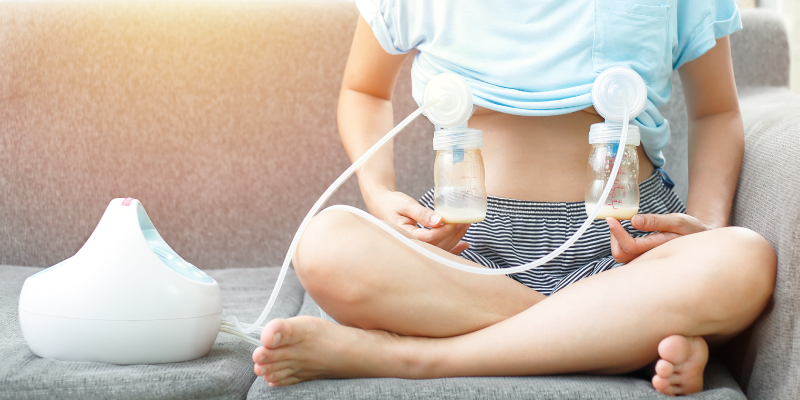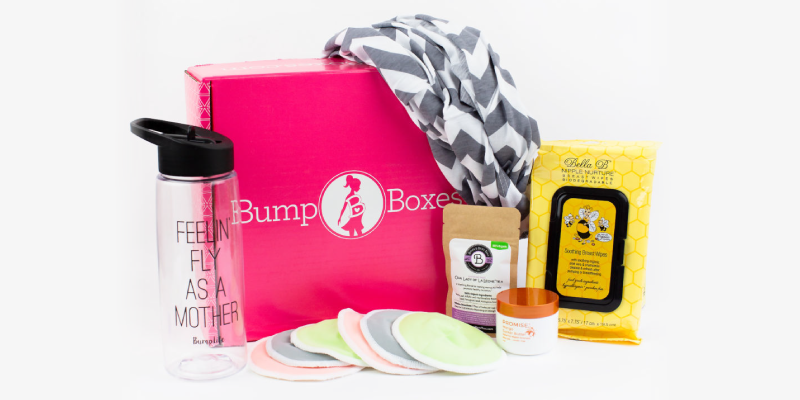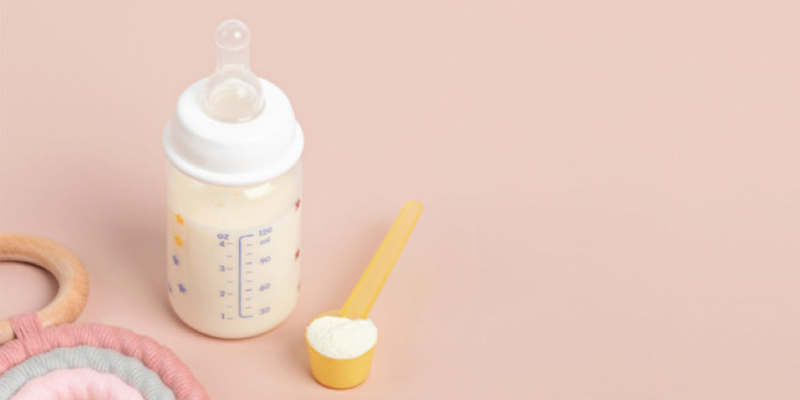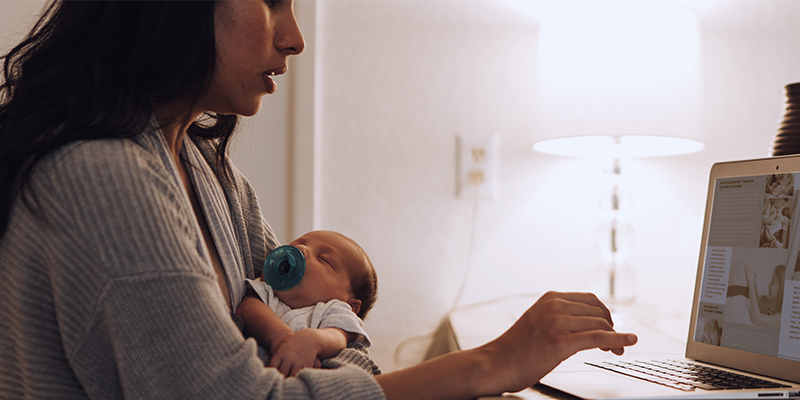Breastfeeding + what to expect
Breastfeeding is a great option for new moms and it comes with plenty of amazing benefits. But like everything else the first time around, you might not know what to expect. That’s why we wrote up a list of the most common symptoms, side effects, and changes.
Let’s get right into it…
What you can expect: Nursing frequency
For the first month of breastfeeding, your newborn will feed at least eight times a day, likely for 15-20 minutes per breast. I’m not good at math, but let’s say that adds up to about four hours of feeding a day. So, basically a part-time job on top of all the other things you’re trying to do as a new mom.
A lot of new moms are shocked to learn just how often they’ll need to breastfeed their baby, but there’s good reason for it. Breast milk tends to digest more easily than formula, which means your baby will likely be hungry more often than a formula-fed baby. But there’s another reason for this frequency in the first few weeks: it stimulates + boosts milk supply.
The good news is that while breastfeeding may be all-consuming and on-demand in the early weeks, over time, your baby will nurse less frequently and develop a more consistent schedule that allows you to feel more like a human and less like a living, breathing buffet.
What you can expect: Breast changes
Your breasts go through a lot of changes in pregnancy and postpartum. In pregnancy, you’ll likely notice an increase in size of about one to two cup sizes. Of course, every woman is different, but every mom experiences some growth caused by milk-producing cells.
Once you’ve given birth, prolactin comes onto the scene to help you produce milk regularly. You can expect your breasts to feel sore in those early postpartum days, but soon your mature milk will come in and that’s when breastfeeding or pumping becomes necessary for your comfort. This is because mature milk makes your breasts feel engorged, hard, and heavy. Expressing the milk provides some relief, which is good news for you and baby.
What you can expect: Nipple tenderness
In the first few days of breastfeeding, it’s normal for your nipples to feel tender and sore because they’re new to breastfeeding. But if the pain persists or is unbearable, there’s likely an issue with your baby’s latch.
For proper latch, your baby needs to have, not just the nipple in the mouth, but also part of the breast. With proper latch, your nipple will be resting on the soft palate of the baby’s mouth, and they’ll actually be putting pressure on the breast, not the nipple. But if the baby isn’t properly latched, all the pressure and force will go onto the nipple itself, causing pain. It’s called breastfeeding, not nipple feeding, but sometimes babies don’t get the memo.
How do you achieve proper latch? Line your baby’s nose (not their mouth) up with your nipple. Touch their nose with your nipple, wait for them to open their mouth wide, and then put them to your breast.
If you’re still experiencing excruciating pain, consult a lactation consultant. They can help with latching and identify if there are any oral ties (lip ties or tongue ties) or other issues (like mastitis) that could be making breastfeeding painful.
There are also a lot of creams out there to help soothe any tenderness, itching, soreness, or throwing you might be experiencing.
What you can expect: Changes in the baby
There are two changes that will occur once you start breastfeeding your little one – one is around weight and the other is around waste.
Typically, newborns lose around seven percent of their birth weight in their first week of life. But after about five days of breastfeeding, infants should start gaining weight back.
It’s common for your baby to gain around four to seven ounces each week, or an average of one to two pounds each month for the first few months. If you feel your baby isn’t gaining the expected weight OR they aren’t maintaining their weight, then it’s best to consult a lactation consultant or pediatrician.
If you’re lucky enough to have a breastfeeding clinic near you, you may be able to go for free weigh-and-feeds to make sure your baby is getting adequate nutrition from each feeding.
In addition to weight gain, if your baby’s getting enough milk, you’ll notice an increase in wet + poopy diapers. Around the fourth or fifth day of life, your baby’s stool will take on a more seedy, yellow appearance. They may not have a stinky diaper after each breastfeeding session, but they should have stool at least 4x a day. And most likely, your baby will have a wet diaper waiting for you after most feeding sessions. These are both good signs of effective breastfeeding and adequate milk supply.
One last thing…
I’ll leave you with one more thing many new moms don’t expect, and that’s just how challenging breastfeeding can be at first.
Breastfeeding is seriously amazing – our bodies provide customized, magical nourishment for our babies. If that’s not cool, I’m not sure what is. But that doesn’t mean it’s going to come naturally.
In those early days, there’s a learning curve for you and baby. After all, you’re both new to this. So, be patient, stick with it as long as you can, and don’t wait until your nipple is damaged to seek help if you’re having trouble.
If you’re in unbearable pain and you can’t get in with a lactation consultant right away, switch to pumping and bottle-feeding your baby until you can get in. It’s better to pump than to continue breastfeeding if it’s damaging your nipple. And chances are, you’ll still be able to switch back to breastfeeding with the help of a lactation consultant.
Pssst! Need a pump? Don’t forget that your insurance company is required to provide you with a free or discounted breast pump for each pregnancy. And don’t worry, you don’t have to add long calls with insurance reps to your to-do list. The insurance-savvy nerds here at Bump Boxes can take care of all the logistics and get your insurance-covered pump sent right to your door. Just fill out the app to get started.

















